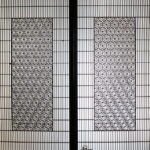Imagine a mask that captures both ancient mysticism and contemporary intrigue—bold yet subtle, traditional yet timeless. In the expansive world of Japanese Mask Design, few masks embody these contrasts as strikingly as the Bugaku Zomen masks. Popularized globally through the enchanting visuals of Studio Ghibli’s “Spirited Away,” these distinctive masks tell stories far deeper and more mysterious than their charming appearance suggests. But what secrets do they hold? Join us on a journey into the fascinating artistry of Zomen masks.
Understanding Bugaku: A Dance through History
Bugaku, the traditional Japanese court dance performed alongside Gagaku music, dates back to the Nara period (8th century). Rooted in a blend of Chinese, Korean, Indian, and Japanese influences, Bugaku was historically showcased during ceremonial events at imperial courts and religious rituals in shrines and temples. The performances are distinguished by vivid costumes and expressive movements, each narrating mythological tales and historic episodes, amplified visually by the unique mask designs.
Zomen Masks: The Artistry and Symbolism
While most Bugaku masks—known as “Bugakumen”—are intricately carved from wood like paulownia or cypress, Zomen masks stand apart. Crafted simply from thin silk-covered Japanese paper and inked with minimalist geometric faces, Zomen exude an understated elegance uniquely reflective of Japanese aesthetic principles.
Their stark design isn’t merely decorative but deeply symbolic. These masks illustrate the essence of Zen philosophy, capturing simplicity and transcendence in a few deliberate strokes, thus transforming performers into enigmatic beings from ancient folklore.
Origins and Cultural Fusion
Zomen’s heritage traces back to cloth masks called “Fusakumen” from the Shosoin Repository, linking directly to the cultural exchanges of Japan’s early history. Scholar Seiroku Noma, in his “History of Japanese Masks,” suggests these masks evolved from techniques introduced through Chinese Gigaku performances, which involved exaggerated, vividly expressive masks.
Three Iconic Zomen Performances
The Zomen masks grace three primary Bugaku performances: Ama, Soriko, and Kotokuraku. Each mask design carries distinct cultural narratives:
Ama Mask
This minimalist mask, featuring abstracted facial features on white silk, possibly echoes Indian and Central Asian influences. Some theories intriguingly link its simplicity to a protective ritual mask, reminiscent of ancient practices to ward off illnesses.
Soriko Mask

Most famously represented by “Kasuga-sama” in “Spirited Away,” Soriko’s Zomen mask is linked to ancient Korean traditions of ritual brewing ceremonies. Its stark geometric design evokes sacred rituals, enhancing the spiritual atmosphere of the performance.
Kotokuraku Mask
Known for its humorous performances resembling early forms of Kyogen theater, the Kotokuraku mask adds a playful dimension to Zomen masks, highlighting the diversity within Japanese mask designs.
If you would like to explore the more academic origins of Zomen, we have consolidated detailed research in the article linked below—highly recommended for the curious mind.
Japanese Mask Design, particularly exemplified by the Zomen masks of Bugaku, encapsulates the profound elegance of simplicity and deep cultural symbolism. Through these masks, we connect to Japan’s rich artistic heritage, experiencing an aesthetic deeply rooted in history yet timelessly contemporary. Whether viewed as an artistic artifact or an inspiration for modern design, Zomen masks continually remind us of the beauty hidden in simplicity. Explore these enigmatic masks and allow their quiet allure to inspire your own journey into Japanese culture and design.
If you’re intrigued by the cultural treasures of the Shosoin Repository and wish to explore more about its history and significance, be sure to check out our related articles below.



